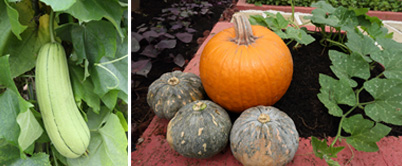A Guide to Plant Fertilisers
Soil in the tropics is generally low in essential nutrients, or elements, necessary for plant growth. Applying fertilisers to the soil helps make it more fertile for your plants to grow and fruit well. Learn more about fertiliser as you stay at home during this period.

Love gardening? Applying fertilisers to the soil helps make it more fertile for your plants to grow and fruit well.
Essential Nutrients
Plants obtain carbon, hydrogen and oxygen from water, air and sunlight, to make food for growth. They also require the following for healthy growth:
- Macronutrients
Namely: Nitrogen, phosphorus, potassium, sulphur, calcium and magnesium. These are required by plants in relatively large amounts.
- Micronutrients, also known as trace or minor elements
Namely: Copper, manganese, zinc, iron, boron and molybdenum. These are required by plants in minimum quantities.
Fertiliser Types
Applying fertilisers increases the amount of nutrients in the soil which can help counter soil fertility problems and enhance plant growth. There are two broad categories of fertilisers:
- Organic fertilisers from decaying plant and animal matter.
These include compost, plant extracts, seaweed, chicken manure, bone and blood meal.
- Inorganic fertilisers from minerals of the earth’s crust or made by chemical processes.
These include urea, ammonium sulphate, super phosphate, potassium chloride, compound fertilisers and mixed fertilisers like 15:15:15.
Common Nutrient Deficiencies
The amount and type of fertiliser to be used depend on the soil condition and plant type. Here are some common nutrient deficiencies to note:
- Nitrogen
It is needed for vegetative growth and production of lush foliage.
Symptoms of deficiency: Leaves turn pale yellow; plant has poor or stunted growth.
- Phosphorus
It is used for the formation of lateral and fibrous roots, promotes flowering and increases plant stem strength.
Symptoms of deficiency: The underside of leaves turns reddish brown or purplish.
- Potassium
Used for fruit formation and enlargement, it also increases disease resistance in the plant.
Symptoms of deficiency: Older leaves of the plant have brown or yellow scorching at their edges and tips.
- Magnesium
It is needed for plant enzyme function and helps form a structural part of chlorophyll.
Symptoms of deficiency: Older leaves have yellowing between its leaf veins.
For more gardening resources including tips for caring for your plants, click here. There are also instructive videos for easy learning.
How can you make your garden more welcoming to bees? Learn more here.
Keep your garden safe from attack by insect pests. Learn more about five such common pests of edible plants here.
Learn more NParks’ Plant Health Services whose work helps keep Singapore safe from the incursion of exotic plant pests.
If you like what you read, follow us on Facebook, Instagram and Telegram to get the latest updates.
Text from Plant Science and Health Branch





Have views or comments on this article? Let us know via this form. If you would like to give us feedback on any other areas relating to our parks and gardens, please submit via https://www.nparks.gov.sg/feedback